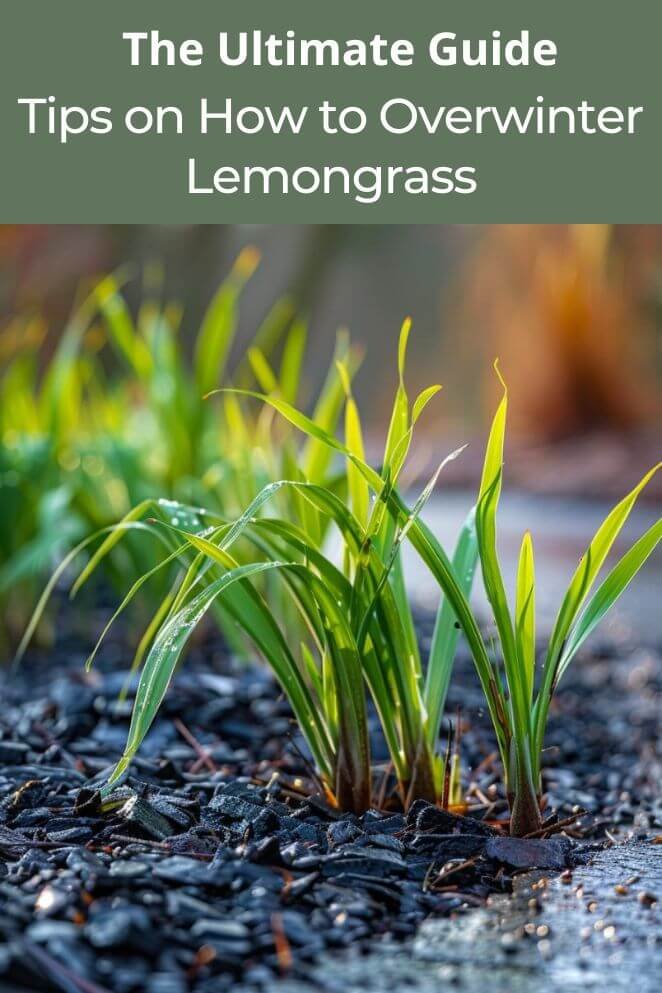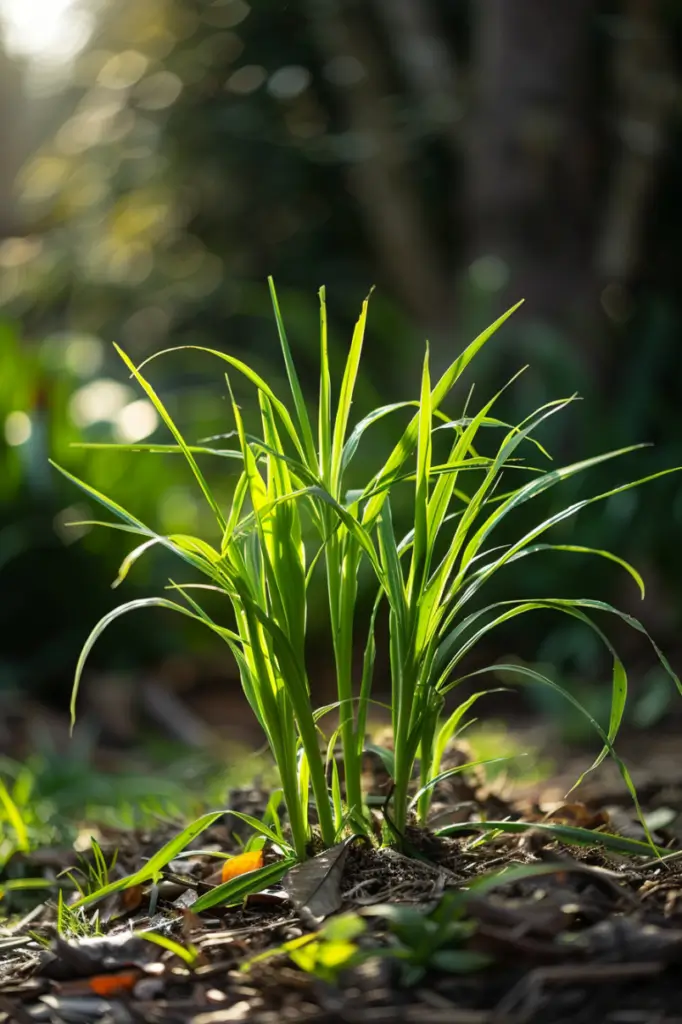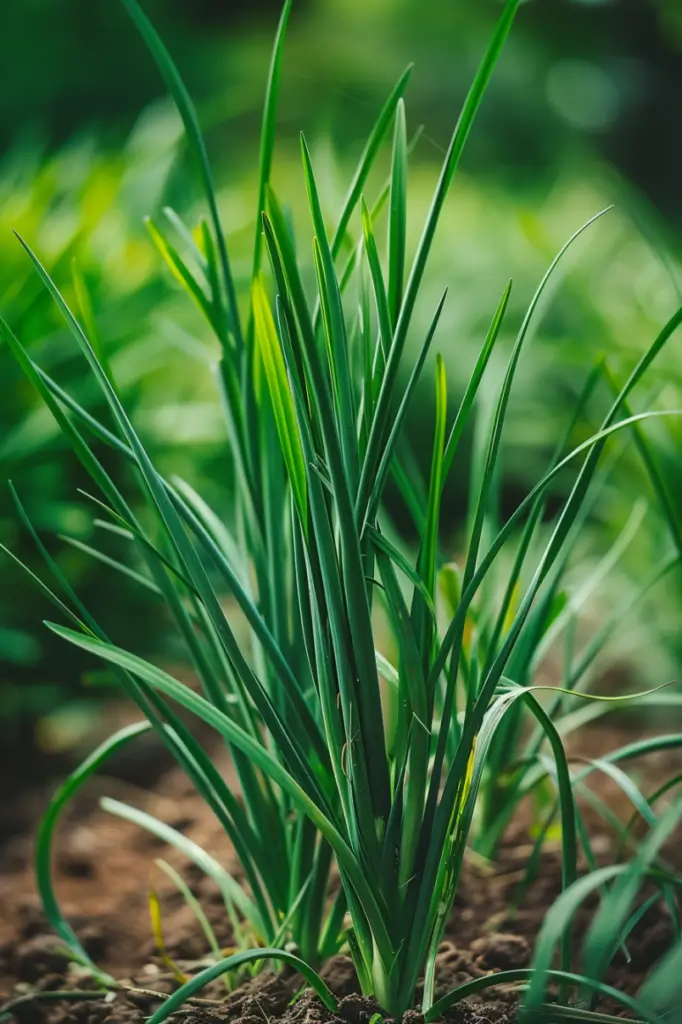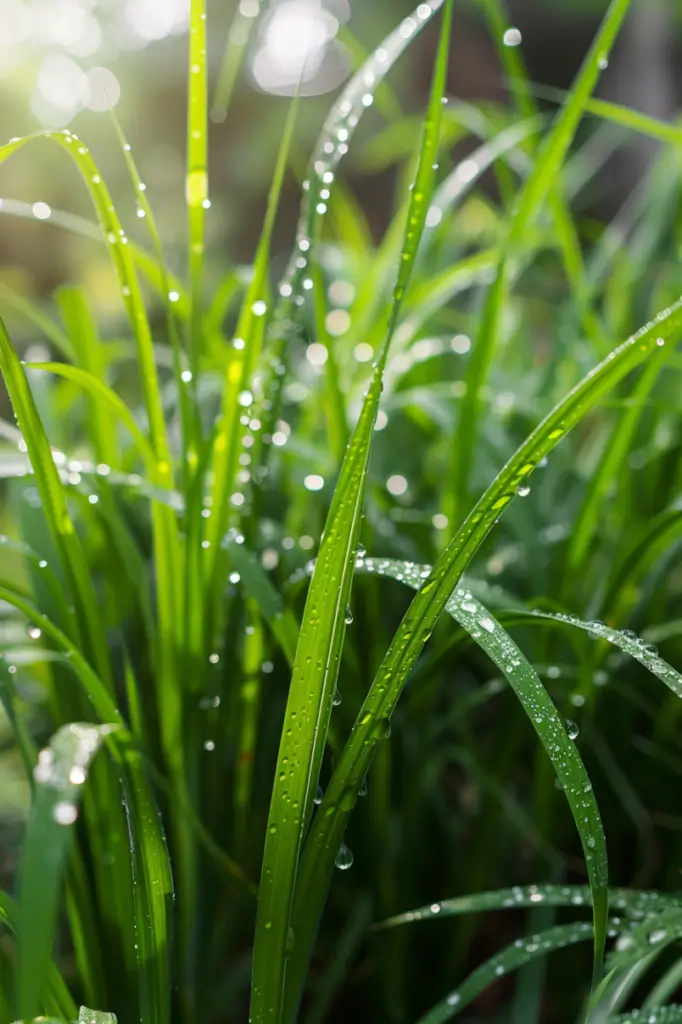
Lemongrass is a fragrant and versatile herb that adds a burst of citrusy flavor to a variety of dishes.
While it thrives in warm, tropical climates, those of us in cooler regions face a unique challenge: how to keep our beloved lemongrass plants alive through the winter.
In this guide, we’ll explore several methods to successfully overwinter lemongrass, ensuring it remains healthy and ready to flourish again in the spring.
Overview of Lemongrass
Lemongrass (Cymbopogon citratus) is a clumping perennial grass native to Southeast Asia and belongs to the Poaceae family, which includes other grasses like corn and wheat.
Its most notable feature is its strong citrus scent, derived from the essential oil citral found in the stalks.
The flavor of lemongrass is lemony with a hint of ginger, most intense in the lower part of the stalk and milder towards the top.
Lemongrass grows from underground rhizomes and thrives in warm, tropical climates, preferring temperatures between 70-95°F (21-35°C) and does not tolerate frost.
It requires full sun, with at least 6-8 hours of direct sunlight daily.
For optimal growth, lemongrass needs well-draining soil, such as sandy loam or a mixture of sand and compost.
The soil should remain consistently moist but not waterlogged.

- Read also: A Beginner’s Guide: Tips on How to Overwinter Begonias
- Read also: How to Overwinter Mandevilla: A Step-by-Step Guide
Challenges of Overwintering Lemongrass in Colder Climates
Lemongrass is a tropical plant that thrives in warm, humid climates.
So, overwintering it in colder climates presents a few challenges:
- Temperature sensitivity: Lemongrass cannot tolerate frost or freezing temperatures. Even a light frost can damage or kill the plant. Ideally, lemongrass needs temperatures to stay consistently above 40°F (4°C) throughout winter.
- Light requirements: During winter, colder climates experience shorter days with less sunlight. Lemongrass thrives in full sun, and insufficient light can hinder its growth or even lead to dormancy.
- Watering needs: In colder temperatures, lemongrass goes dormant and requires less water. Overwatering during dormancy can lead to root rot.
Preparing Lemongrass for Winter
Before winter arrives, it’s crucial to prepare your lemongrass plants.
Here’s a step-by-step guide:
Step 1: Prune the plant
Cut back the lemongrass to about 6-8 inches tall. This reduces the plant’s size and makes it easier to manage.
Step 2: Check for pests
Inspect the plant for any pests or diseases and treat accordingly. Bringing pests indoors can create problems for other houseplants.
Step 3: Dig up the plant
Carefully dig up the lemongrass clump, preserving as much of the root system as possible. Shake off excess soil.
Ways to Overwinter Lemongrass Plants
Overwintering lemongrass (Cymbopogon citratus) can be successfully done with a few different methods, depending on your climate and available resources.
Here are some effective ways to keep your lemongrass alive through the winter:
Method 1: Indoor overwintering
Potting the plant
- Dig up the lemongrass clump before the first frost.
- Divide the clump into smaller sections, each with some roots attached.
- Plant these sections in pots with well-draining soil.
Indoor care
- Place the pots in a sunny window where they can get at least 6-8 hours of light per day.
- Water sparingly; the soil should be kept just moist, not soggy.
- Maintain a warm indoor temperature, ideally between 60-70°F (15-21°C).
Method 2: Greenhouse overwintering
- If you have a greenhouse, this is an ideal place to keep lemongrass during the winter.
- Ensure the greenhouse remains warm, ideally above 40°F (4°C).
- Water the plants as needed, keeping the soil lightly moist.
Method 3: Mulching for outdoor overwintering
- In mild winter regions (USDA Zones 8 and above), you can leave lemongrass in the ground.
- Before the first frost, cut the plant back to about 6-12 inches (15-30 cm).
- Apply a thick layer of mulch (like straw, leaves, or compost) around the base of the plant to insulate the roots.
- Cover the plant with a frost cloth or burlap if extremely cold temperatures are expected.
Method 4: Plant lemongrass in water
- Cut a few stalks of lemongrass with at least 2-3 nodes (the knobby joints).
- Place these stalks in a glass of water, ensuring the nodes are submerged.
- Keep the glass in a sunny spot and change the water every few days.
- Once roots form, you can pot the stalks in soil and grow them indoors as you would with potted plants.

Post-Winter Care
As spring approaches, gradually acclimate your lemongrass to outdoor conditions:
- Reduce indoor watering: Slowly reduce the amount of water as the plant prepares to go back outside.
- Reintroduction to sunlight: Start by placing the plant in a shaded area, then gradually move it to a sunnier spot over a week or two.
- Replant in the garden: Once the last frost date has passed, replant your lemongrass in the garden. Ensure it’s in a sunny spot with well-draining soil.
Harvesting and Storing Lemongrass Over Winter
Lemongrass won’t survive freezing temperatures, but you can enjoy its citrusy goodness all winter long by strategically harvesting and storing it.
Here’s a breakdown of both approaches:
Harvesting lemongrass
Harvest your lemongrass before the first frost arrives. Typically, this falls in late fall or early winter depending on your climate.
What to harvest:
- Fresh cuttings: Focus on the tender, light-colored, inner stalks. These are ideal for using fresh in your cooking throughout winter.
- Outer leaves: The tougher outer leaves can be dried for later use in teas or potpourri.
Storing lemongrass
There are three main ways to store lemongrass for winter, each with its own advantages:
- Fresh storage (Short-term): Wrap the base of the lemongrass stalks in a damp paper towel and store them loosely in the crisper drawer of your refrigerator. Fresh lemongrass can last for up to several weeks with this method.
- Freezing (Long-term): Frozen lemongrass can last for up to 6 months while retaining most of its flavor and aroma.
- Method 1: Chopped: Chop the lemongrass stalks into desired sizes (e.g., 1-inch pieces). Portion them out onto baking sheets and freeze for a few hours. Once frozen solid, transfer them to airtight freezer bags.
- Method 2: Puréed: Blend the lemongrass with a little water to create a paste. Freeze in ice cube trays and transfer the frozen cubes to freezer bags for space-saving storage.
- Drying (Long-term): Thinly slice the tougher outer leaves and spread them out on a drying rack in a warm, well-ventilated area with indirect sunlight. Alternatively, you can use a dehydrator set to a low temperature (around 100°F). Dried lemongrass can be stored in airtight containers in a cool, dark place for up to a year.

- Read also: Blooms All Winter Long: Tips on How to Overwinter Hibiscus
- Read also: Tomato Triumph: Tips on How to Overwinter Tomato Plants
Conclusion
Lemongrass flourishes in warm weather and is sensitive to frost. With a little effort, you can successfully overwinter this aromatic herb and enjoy it year-round.
You have several options: bring it indoors, use a greenhouse, mulch it in place, or plant it in water.
With proper care, your lemongrass will thrive and be ready for vigorous growth in the spring.
FAQs
Lemongrass can tolerate a light frost but is highly sensitive to prolonged cold and freezing temperatures. Protecting it from frost is essential.
Water your indoor lemongrass regularly to keep the soil moist but not waterlogged. Avoid letting the soil dry out completely.
Yes, lemongrass can be grown indoors if it receives enough light. Use a sunny window or grow lights to ensure it gets 6-8 hours of light daily.
Increase humidity around the plant by using a humidity tray or misting it regularly. Ensure you’re watering adequately without overwatering.
Replant lemongrass outside after the last frost date in your area, once temperatures are consistently above 50°F (10°C).



